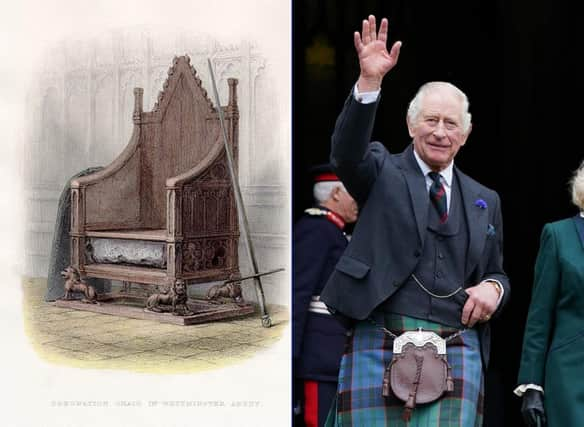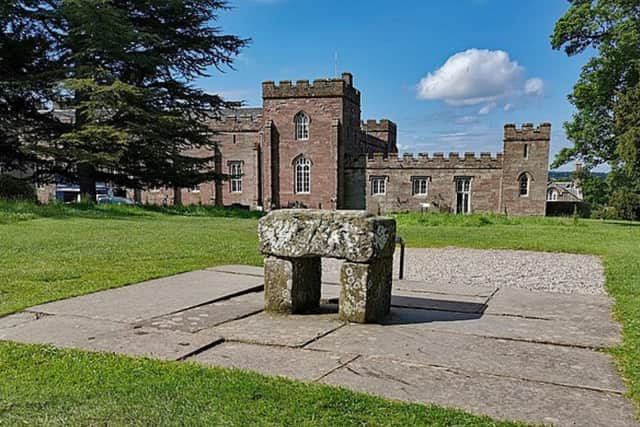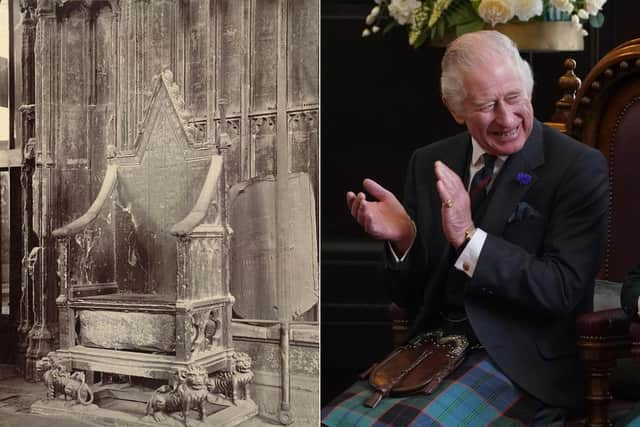The Stone of Destiny: What is the legendary Scottish stone set to appear at the King’s Coronation?


The Stone of Destiny, a historical artefact connected to Scotland, has been at the heart of a controversy as the Coronation of King Charles III took place this year.
After the announcement that the legendary stone, also known as the Stone of Scone, would be moved from Edinburgh to Westminster Abbey to play a ‘crucial role’ at the royal event, the proposal was widely criticised.
Advertisement
Hide AdAdvertisement
Hide AdThe Royal Family’s regalia features jewels and St Edward’s Crown so a antiquated rock that isn’t dazzling may not seem important but it is of huge cultural significance. What’s more, the stone is now set to appear at the King’s upcoming “Scottish Coronation” in St Giles’ Cathedral in Edinburgh, fuelling yet more discourse.
Here’s what the Stone of Destiny is and how it featured in King Charles III’s coronation.
What is the Stone of Destiny?
According to Historic Environment Scotland, the Stone of Destiny is an ‘ancient symbol’ of the Scottish monarchy known as Stane o Scuin in Scots or An Lia Fàil in Scottish Gaelic.
It is composed of a pinkish buff sandstone that is reminiscent of that found in areas like Angus which is nearby to Scone (Old Scone was once the Kingdom of Scotland’s historic capital.) In 1296, King Edward I of England took the stone from Scotland and had it incorporated into a throne at Westminster Abbey.
History Hit reported that it “served as a symbol that the kings of England were to be crowned kings of Scotland too following the Treaty of Union of 1707.”


History of the Stone of Destiny
On Christmas day in 1950, four students from Scotland made history by removing the Stone of Destiny from Westminster Abbey; their deed was even immortalised in Scottish cinema. The stone then reappeared at the high altar of Arbroath Abbey in Scotland three months later.
When the London police were informed, they reclaimed the stone and returned it to Westminster and it wasn’t until 1996 that it was ‘officially’ returned to Scotland and placed on display in Edinburgh Castle. It has since rested in the Crown Room along with the Crown Jewels in the Royal Palace to the east side of Crown Square.
However, some suspect that the ‘Stone of Destiny’ that the police reclaimed decades ago was not the genuine artefact at all, rather it was a replacement left to fool them. A local pub legend suggests that the stone now rests in The Arlington, a historic bar in Glasgow which has operated since 1860. It is possibly the site where the students hid it.


Did Charles sit on the Stone of Destiny?
Advertisement
Hide AdAdvertisement
Hide AdYes, the latest monarch of Britain sat on the Stone of Scone for his coronation. The Daily Express said: “As part of the ancient ceremony, he will be required to sit on the Coronation Chair that contains the sacred Stone of Destiny, or the Stone of Scone as it is also sometimes known.”
Comments
Want to join the conversation? Please or to comment on this article.
